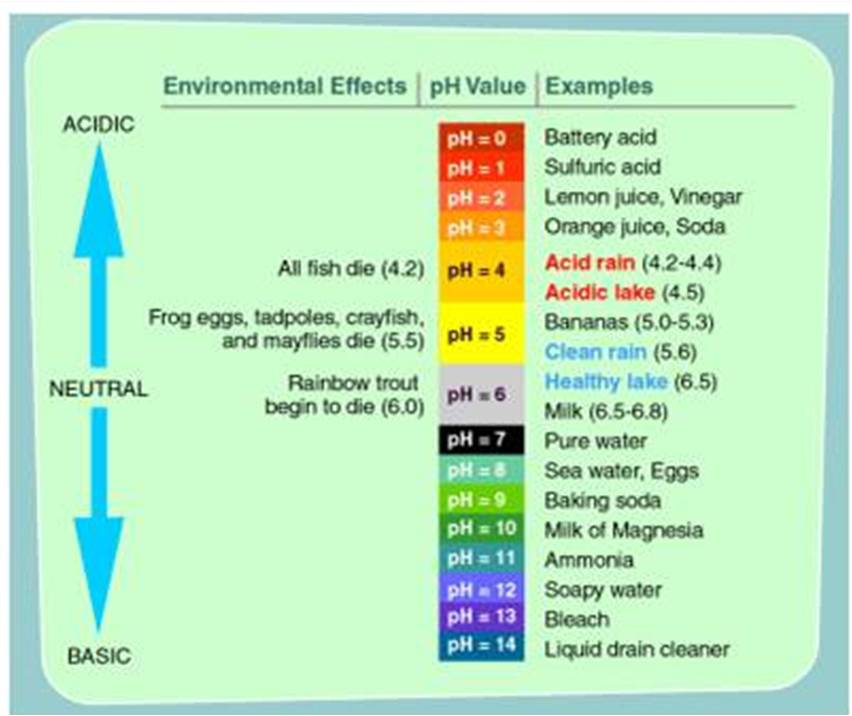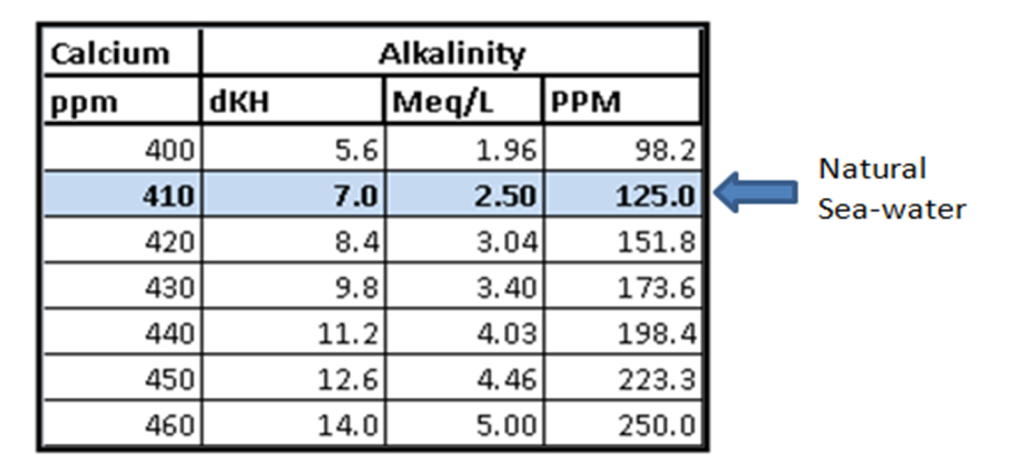
pH in Marine Aquariums
pH (Potential Hydrogen) is simply a way to measure the concentration of hydrogen ions in solution. With a PH of 7.0, water is said to be neutral, anything lower becomes acidic while anything higher is said to become alkaline (basic). The scale used to measure pH is also logarithmic due to the enormous range of hydrogen ions. Using this type of scale, you will see a increase in hydrogen ions by a factor of 10 for each 1.0 difference in the pH values. For example, when you have a PH of 6 there is 10 times as many hydrogen ions as compared to a pH of 7 and 100 times as many ions as compared to a pH of 8.0. This is a good way to illustrate the potential scope of the impact a change in pH can have.
Generally, a pH of 7.9 to 8.4 is considered to be the normal range for a average marine aquarium. I always like to keep my pH stable at a value between 8.0 and 8.3. pH is a very important element of water chemistry to understand and test for, as large and quick swings in your pH can cause stress to fish and corals even resulting in deaths in certain situations. pH is one of the aspects of water quality that can also be an indicator or symptom that something else may be off in your set-up. For that reason I do not recommended trying to adjust your pH with pH stabilizing or adjusting chemicals as you may not be fixing the potential problem(s) but only masking the symptoms. If you are having difficulty maintaining your pH, you should first try to understand the cause of the pH problems and address those causes first. That approach has always worked best for me.
The two biggest factors that commonly affect your pH are:
A) Alkalinity
Alkalinity has a big impact on the pH. As your level of alkalinity increases, so will your PH. As your alkalinity decreases, so will your PH as well. This is one of the more common causes to consistently low pH levels in a marine tank. One of the best preventative measure is to stabilize your alkalinity within the normal range. A stabilized dKH level between 8.0 and 12.0 while maintaining your calcium and magnesium in balance with it, will help you stabilized both your PH and your alkalinity. The key is understanding that alkalinity, calcium, and magnesium must be all maintained within balance with each other in order to become stable and help stabilize your pH. The data in the below chart was developed by Randy Holmes-Farley and shows the levels that calcium and alkalinity should be balance with each other. Maintaining your magnesium between 1200 and 1300ppm will help to keep a balanced alkalinity and calcium stabilized which will help your pH to stabilize within the normal range as well. I prefer to keep my dKH and Cal a little higher than natural seawater around 430ppm of cal and 9.6 to 9.8 dKH as those are the levels of my salt mix helping me avoid any swings in parameters during weekly water changes.

Some of the common factors that can affect your alkalinity level can include:
1) Calcium levels too low or too high
2) Magnesium levels are too low or too high
3) Carbon dosing (any and all forms of it)
4) Over / Under Supplement dosing (ie.. Ph buffers, calcium buffers,… and so on)
B) Carbon Dioxide.
This too can affect the PH in the same way as your alkalinity level. As the level of carbon dioxide increases, you pH will decrease. As it decreases, your pH will rise. This is one of the more common causes to higher levels of pH. This also explains why the pH in most set-ups is at its lowest level just before the lights come back on at the beginning of each day. While the lights are on in the main tank, photosynthesis is occurring in the tank converting the carbon dioxide in the water into oxygen which will raise your pH. While the lights are off at night, no photosynthesis occurs yet the aquarium inhabitants are still taking oxygen out of the water and adding carbon dioxide into the water, thus raising the levels of carbon dioxide and lowering the pH. In these situations, pH swings of 0.2 to 0.5 can be typical. As the pH is so closely tied to your alkalinity, swings in your alkalinity levels can also be encountered as a result of pH swings. One of the most common approaches to minimize this is to grow algae in a sump or refugium and place the sump or refugium lighting on a reverse timing schedule to the main lights on the tank. This way, you will continue the photosynthesis process in the sump or refugium while it stops in the main tank helping to maintain a more constant carbon dioxide level in the water. Increasing the oxygen levels in your water through air movement across the water’s surface and the use of a skimmer may also be used to help maintain a stable amount of carbon dioxide in the water provided there is the correct oxygen and carbon dioxide levels in the air in the surrounding area or room.
One important note to make is that before you start making changes to your marine set-up based on your test results, is to make sure your test results are accurate. Have your pH levels confirmed first and take many measurements/tests over the course of a day as well. In my experience, liquid test kits for measuring pH in marine aquariums are not all that accurate regardless of the brand you may use. Unless you are using a properly calibrated electronic pH meter, you should have your pH test results verified before reacting to a problem that might not even exist.
Please feel free to start a thread in the forum to ask any questions you may have. If you are not already a member, you will need to sign-up first.
http://www.aquaticcommunity.com/aquariumforum/forumdisplay.php?f=62
Here’s some the information that I used when learning about, and writing, the above topic.
http://reefkeeping.com/issues/2006-06/rhf/index.php
http://reefkeeping.com/issues/2005-03/rhf/index.php
http://reefkeeping.com/issues/2004-09/rhf/index.php
http://www.aquaticcommunity.com/marineaquarium/ph.php
http://www.fishchannel.com/saltwater-aquariums/aquarium-care/ph-and-alkalinity.aspx
As a Newbie, I am always searching online for articles that can aid me. Thank you
Great post!
Thanks for your efforts
I got what you mean,saved to fav, very decent web site.